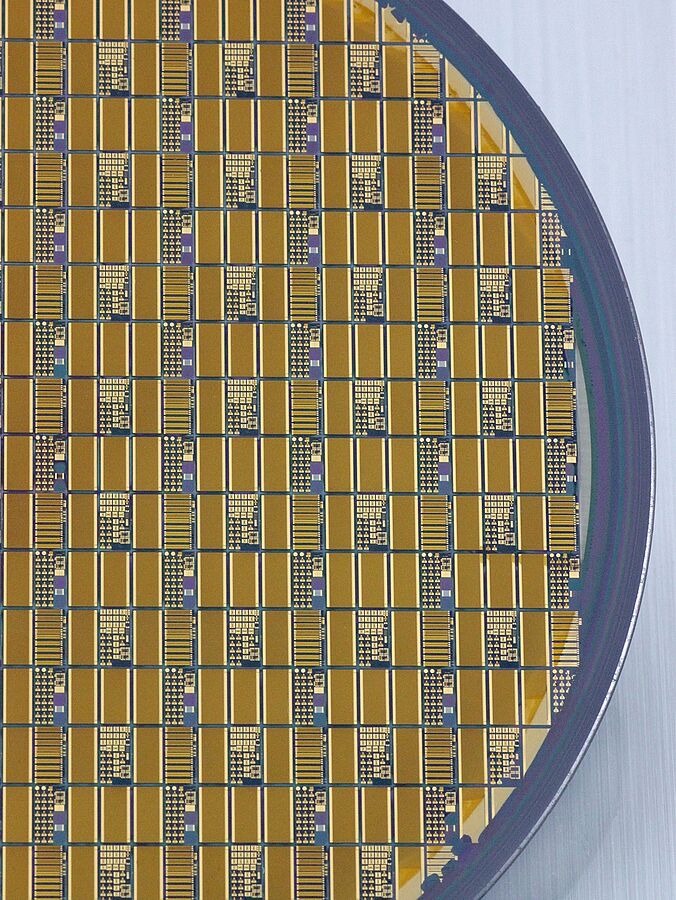HiPoSwitch, an EU group-project, has successfully developed lightning-fast, high-efficiency gallium nitride power switches. These are essential for producing energy-efficient, compact, and light-weight power converters that make electrical energy more useable. The market potential is enormous, since these converters are found in nearly every electronic device.
Electrical power comes out of wall sockets, of course. But hardly any electronic device can take normal line voltage. Computers, smartphones, LEDs, and chargers for instance cannot use electrical energy in that form – the line voltage must be converted from AC to DC, for example. The reverse conversion (DC-AC) is also commonly used, such as in solar panel inverters. Power converters use power transistor switches as key components to accomplish this. Lightning-fast semiconductors switches able to operate these kinds of converters far more efficiently than before have now been developed in the recently completed EU group-project called HiPoSwitch. Eight European institutional and industrial project partners led by the Ferdinand-Braun-Institut, Leibniz-Institut fuer Hoechstfrequenztechnik (FBH) have successfully developed prototype power transistors that use gallium nitride (GaN) in enhancement mode.
Power converters using these novel gallium-nitride transistors have less than half the losses of existing technologies and make conversion efficiencies of over 98% practical. A great deal of primary energy consumption can be saved with their widespread use. “More than 3000 terawatt-hours of power are generated in Europe annually,” explains Joachim Würfl, head of both the HiPoSwitch project and the GaN Electronics Business Area at FBH. “If you only converted a quarter of the electricity produced annually in Europe to a different level and increased the efficiency level by two percentage points, you can turn off at least two coal-fired plants,” says Würfl.
Hand-in-hand: from high-performance materials to mass-production techniques
Gallium nitride possesses ideal physical properties for a semiconductor. "GaN components are therefore very efficient and very fast power switches. And this is because of their low on-state resistance with negligible losses,” Würfl emphasizes. At the same time, higher switching frequencies mean that passive elements of the power converter, i.e. the inductive coils and capacitors, can be considerably smaller in size – a definite improvement on the systems side.
GaN has already been utilized in microwave transistors for a long while and applied in thin layers mostly on silicon carbide (SiC) substrates. This technology has been further developed by FBH over the last few years for 600 volt-rated power transistor switches. “This works well, but it is too expensive for mass markets. As an alternative, the processes developed for SiC can be transferred to considerably more cost-effective, but technologically more challenging silicon substrates,” Würfl explains.
The advances made in the HiPoSwitch project fit hand-in-glove with FBH’s collaboration partners. Among other accomplishments, FBH was so successful in optimizing the processing of GaN switching transistors on SiC and silicon (Si) that nearly ideal components became feasible. Among others, comprehensive investigations of drift and degradation effects carried out by University of Padua and University of Vienna provided the foundation for this. The finished transistor chips were finally assembled into low-induction ThinPAK housings by Infineon in Malaysia. “The single transistor measures only 4.5 x 2.5 mm and is optimized for switching 600 volts. It has an on-resistance of 75 milliohms and handles a maximum of 120 amperes. We are the only ones in Europe who can manufacture these kinds of normally-off transistors at present,” says Würfl.
The Belgian company EpiGaN together with facility manufacturer Aixtron moved the epitaxy to Si – so that the manufacturing costs for the substrates drop by more than a factor of ten. At the same time, the wafer diameter increased to 6" or even 8", a necessary step towards cost-effective industrial production. Chip-manufacturer Infineon matched up the newly developed GaN technology with a Si process line for industrial production of power semiconductors at their Austrian location in Villach.
Part of the project possessed a decidedly “exploratory character”, as Würfl puts it, due to the completely new techniques and processes for implementing GaN power transistors that had never before been tried. Promising ideas for producing semiconductors were successfully tested together with colleagues at the University of Vienna and the Academy of Sciences in Bratislava, Slovakia.
The Austrian company Artesyn is positioned at the end of the value-added chain as a systems-level partner. They developed a 3-kW rectifier for telecommunications applications including cellular base stations. This unit converts line voltage to DC with an efficiency of 98%. A specialized switching topology was developed and implemented that is matched to the properties of the GaN switching transistors.
Thanks to their broad usage, the market for energy-saving power converters is enormous. Their smaller size and weight also makes them highly attractive for aerospace applications.
The related press picture and further images are provided on our website:
http://www.fbh-berlin.com/press/download-center. All images are copyrighted.
Contact:
| Petra Immerz, M.A. Communications & Public Relations Manager Ferdinand-Braun-Institut Leibniz-Institut für Höchstfrequenztechnik Gustav-Kirchhoff-Straße 4 12489 Berlin phone: +49.30.6392-2626, Fax: +49.30.6392-2602 E-Mail: petra.immerzfbh-berlin.de Web: www.fbh-berlin.de |


